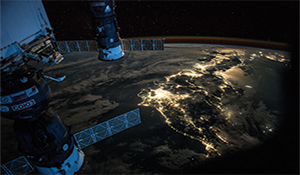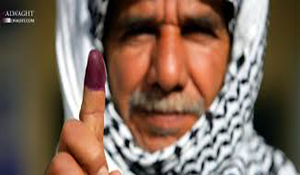
Denying the Seeds of Future Conflict
Question (R6.1): What conditions (demographic, political, etc.) should exist on the ground in the Middle Euphrates River Valley and the tri border (Syria/Jordan/Iraq) region to deny the seeds of future conflict from being planted – particularly taking into account the assumed intention of Iranian proxy forces to establish a Shia “land bridge?” Which of these […]
Continue ReadingCompetition Short of Armed Conflict with a Regional Power
Question (R6.7): Are there examples from US history of competition short of open conflict1 with a regional power? What lessons exist that may be applied to resolving competing US/Iran objectives short of open conflict? Which examples are most relevant—pre- or post-World War II? Author | Editor: Polansky (Pagano), S. (NSI, Inc.) Executive Summary The experts […]
Continue ReadingGlobal Power Competition
Question (R6.2): In the event that the US/Coalition is challenged by another global power [Russia for the purposes of this response], what are the second and third order effects in the USCENTCOM area of responsibility? Author | Editor: Jafri, A. (NSI, Inc). Executive Summary As Russia continues to challenge United States’ power and influence around […]
Continue Reading
Strategic Risk in the Space Domain
[Q16] Which international actors currently have the greatest strategic risk in the space domain? What affordable non-space alternatives are there to mitigate or avoid that strategic risk? A Virtual Think Tank (ViTTa)® Report. Author: George Popp (NSI, Inc.) Summary Response This report summarizes the input of 15 insightful responses contributed by space experts from National […]
Continue ReadingBlame, Sway, and Vigilante Tactics
Blame, Sway, and Vigilante Tactics: How Other Cultures Think Differently and Implications for Planning. Author | Editor: G. Sutherlin (Geographic Services, Inc.). Executive Summary Planners require context in order to achieve their goals. While planners understand that colder or more elevated locations have implications for an operation, the capacity to similarly adapt plans and operations […]
Continue Reading
Ally, Adversary, and Partner Use of Space
[Q2] How does each entity in the following categories conceive of space operations for military and commercial purposes? How do they approach space operations and services? Is there any difference in how their commercial ventures (if any) consider security during peace, crisis, and conflict? a. PRC, Russia, Iran, North Korea; b. European Space Agency, Japan, […]
Continue ReadingStrategic Implications of PRC’s Base in Djibouti
Question (R5.6): What are the strategic implications of the People’s Republic of China (PRC’s) new base in Djibouti? What will be the effect on the Iran-PRC relationship? Author | Editor: S. Canna (NSI, Inc,). Executive Summary Background There are a number of legitimate reasons that account for China’s decision to break with decades of tradition […]
Continue Reading
Extent of Iran’s Ability to Influence Iraqi Elections
Question (R5.3): How much influence can Iran wield in the next Iraqi election? Author | Editor: S. Canna (NSI, Inc,). Executive Summary Overview of Electoral System Iraq is a parliamentary democracy and, as the April 2018 elections approach, political jockeying for votes and influence has already begun. Iraq has a unicameral house called the Council […]
Continue Reading
Multi-Step Approach Closing DoD’s Cognitive Capability Gap
A Cognitive Capabilities Agenda: A Multi-Step Approach for Closing DoD’s Cognitive Capability Gap. Author | Editor: A. Astorino-Courtois (NSI, Inc,). Executive Summary The Strategic Multi-Layer Assessment (SMA) team conducted a year-long project for USSOCOM on the growing prevalence of Competition Short of Armed Conflict (CSAC), or use of “Gray Zone” tactics by US adversaries. Key […]
Continue ReadingGulf Cooperation Council Stability & Influence
Question (R5.5): How stable is the Gulf Cooperation Council (GCC), and to what extent can the United States rely on the GCC to influence foreign policy objectives in the region? What are the implications of the changing dynamics between GCC members? Author | Editor: W. Aviles (NSI, Inc,). Executive Summary The Qatari crisis that is […]
Continue Reading